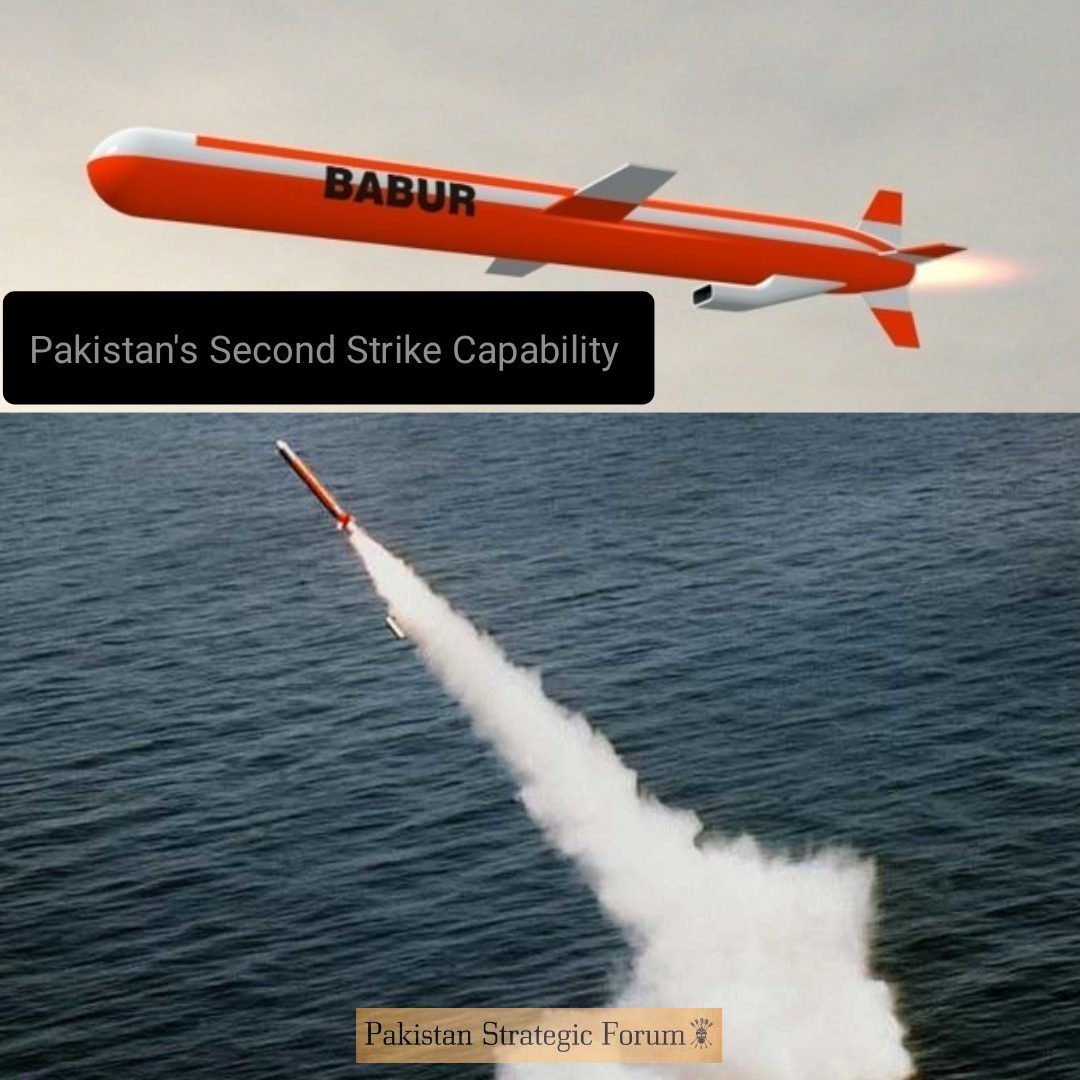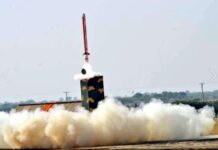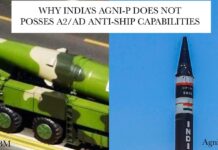Pakistan and India have been at loggerheads since their inception in 1947 and the two neighbors have already waged wars three times with ever high tensions still present today. These tensions have put both states in an arms race of building up a strong military and accumulating numerous arsenals to deter the other. India became a nuclear power on 18 May 1974 when it successfully detonated their nuclear device in Pokhran desert, code-named operation Smiling Buddha. This caused a security dilemma for Pakistan and soon Pakistan started to pursue its own nuclear program and got successful on 28 May 1998 by detonating underground nuclear devices in Ras Koh hills of Chagai district code-named operation Chagai-1. This gave Pakistan the capability to deter India in case of a full-scale war as conventionally Pakistan could not match the Indian military might be due to its massive size in population and as a result larger economy.
Nuclear Triad and 2nd Strike Capability
Only detonating nuclear devices does not yield nuclear deterrence. A state who intend to make an effective deterrence must complete their nuclear triad. That includes having capability to launch nuclear tip warheads from land, air or sea with a proper command and control structure possessing a reliable second-strike capability. The ability to retaliate to a nuclear strike from a hostile state is known as second-strike. Second strike can be conducted from a remote and secret ground based site or mobile launcher which didn’t came under enemy attack, from air launched platforms (mostly ALCM) that too if aircraft stationed on bases that are far off and safe from attack and the most prominent & effective method of sea or undersea launched systems (SLCM or SLBM). Sea based system is most convenient as submarines cannot be detected or targeted easily and submarines can launch the silos while keeping the element of surprise.
Pakistan has completed its nuclear triad over the years and gained second-strike capability. Pakistan can store its nuclear arsenal in secret places far out of reach of India reportedly in mountains of Baluchistan where they are well hidden, safe and could be launched at spur of a moment from both fixed and mobile platforms. According to US intelligence Pakistan had around 6 hard built and deeply buried launch facilities to retain second-strike capability till 1998 their number have only increased yet. In 2008 US admitted that it did not know where all of Pakistan’s nuclear sites are located.
The potential of Pakistan to strike from the air lies with Ra’ad ALCM. Developed by Air Weapon Complex & NESCOM. First tested in 2016 and then adopted by PAF in 2016, Ra’ad can carry both nuclear and conventional warheads weighing around 1100 kg with a range of 350 km. Initial tests were conducted with Dassault Mirage III ROSE attack aircraft but there is a potential to integrate with PAC/CAC JF-17 Thunder multi role aircraft. This matter can be regarded under Air Force Strategic Command (AFSC).
The bulk of any country’s second-strike capability relays on its submarine launched systems and so does of Pakistan. Pakistan successfully tested Babur-III (SLCM) from one of its French design Agosta 90 B Class diesel electric attack submarine on 7 January 2017. Babur-III is a sea launched version of Babur (Hataf VII) short range subsonic cruise missile. It is developed by National Development Complex (NDC) weighing around 1500 kg with a range of 450 km carrying warhead up to 500 kg. Pakistan has currently 5 Agosta class submarines namely PNS Hashmat, PNS Hurmat, PNS/M Khalid (S137), PNS/M Saad (S138) and PNS Hamza (S139) out of which 3 are B90 class and can launch Babur-III SLCM. Additionally, Pakistan is in a process of procuring 8xType 039A class submarines which will future extend Pakistan’s SLCM capabilities. All under command of Naval Strategic Forces Command (NSFC).
Criticism
However, Pakistan’s second-strike capability is having some doubts and loopholes which makes it open to some criticism at hand. In aerial arena though Pakistan has developed a credible weapon of retaliation, but its efficiency and effectiveness is darkened by the fact that only Dassault Mirage-III ROSE attack aircraft of PAF are so far only integrated with Ra’ad missile. Mirages are themselves getting old now after serving over for 52 years with PAF despite being upgraded from time to time. Hence making the use of Ra’ad missile limited to few crafts of PAF and Ra’ad missile also lacks range and grater payload capability.
The ability of Babur-III missile to launch from torpedo tubes might allow for demitting the delivery system and the warheads disassembled onboard a submarine. An option that is quite difficult. The missile genuinely lacks range as it is a cruise missile with only few parts of India coming in its reach. Its nuclear yield is unknown yet. It is not clear what sort of control system is present aboard the Pakistani submarines to prevent an unauthorized or accidental fire. Placing nuclear tipped weapons on a conventional submarine is not much of a good idea. The blurring line between conventional and nuclear submarines injects ambiguity and enhances the chances of miscalculation and accident in deep waters. Pakistani diesel electric submarines are not as stealthy a most nuclear submarines are due to their power coming from nuclear energy. They cannot remain submerged for more than three weeks, they must climb to surface to charge their batteries and in doing so they can be detected by Indian anti-submarine crafts during that duration. Diesel electric submarines cannot dive to extreme depths either so it is not possible that Pakistan Navy will try to near Indian shores and hide there for longer than necessary. Diesel electric submarines do not consist of vertical launch tubes so they cannot carry ballistic missiles either.
To overcome these factors and attain credible and deterrent second-strike capability. Pakistan needs to work out on many factors. PAF needs to integrate Ra’ad missile on its other aircraft as well. Pakistan Navy needs to acquire more submarines as current inventory is less nearly doing no good in front of the big numbers such as Indian navy. Pakistan navy also needs to go for development of nuclear submarines and SLBM. Nuclear submarines are stealthier and less noisy than diesel electric submarines. Nuclear submarines possess sophisticated technology which makes its operations safer than diesel electric submarines. Nuclear submarines have vertical launch tubes so they can carry ballistic missiles. If Pakistan develops SLBM than near all of India will be in Pakistan Navy’s range with element of surprise credible deterrence is assured.
Follow us on Twitter: @ForumStrategic
Follow us on Instagram: strategic_pak
Follow us on Reddit: r/PakStrategic
#Alpha
#TeamPakistanStrategicForum







